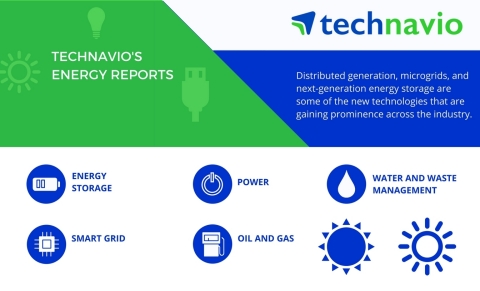LONDON--(BUSINESS WIRE)--Technavio market research analysts forecast the lead-acid battery market in Southeast Asia to grow at a CAGR of close to 9% during the forecast period, according to their latest report.
The market study covers the present scenario and growth prospects of the lead-acid battery market in Southeast Asia for 2017-2021. The report also lists stationary, automotive and motive residential buildings, and automotive as the three major application segments, of which the stationary segment accounted for 52% of the market share in 2016.
This report is available at a USD 1,000 discount for a limited time only: View market snapshot before purchasing
Buy 1 Technavio report and get the second for 50% off. Buy 2 Technavio reports and get the third for free.
Technavio analysts highlight the following three market drivers that are contributing to the growth of the lead-acid battery market in Southeast Asia:
- Increasing deployment of microgrids
- Improved consumer spending
- Change in energy mix
Looking for more information on this market? Request a free sample report
Technavio’s sample reports are free of charge and contain multiple sections of the report including the market size and forecast, drivers, challenges, trends, and more.
Increasing deployment of microgrids
A microgrid is a small-scale, localized power station than can either operate independently or in congruence with the main central grid. As a way to incorporate renewables, microgrid often involves multiple energy resources such as solar, wind, biomass, geothermal, and fossil fuel generators. With the integration of renewable power sources, it can function as hybrid and operates independently to supply power to a local community, a university, or a military base among others.
A microgrid is connected to the central grid as a single point of load and usually accompanied by energy storage systems to address the intermittency of the renewables, and the entire network is managed by an energy management system.
“Microgrids are more resilient to natural calamities than traditional grids and provide power to a limited geography when the main grid fails. A major portion of rural and remote areas in Southeast Asia are yet to have access to electricity. With the growing deployment of microgrids in Southeast Asia, the market for lead-acid batteries is likely to grow,” says Thanikachalam Chandrasekaran, a lead analyst at Technavio for energy storage research.
Improved consumer spending
Consumer spending is a substantial economic factor since it usually matches with the consumer confidence in a nation’s economy. High consumer confidence indicators characteristically relate to upper levels of consumer spending in the economic market.
The growth in urbanization and increase in the number of earning members in a family have led to an increase in disposable income in Southeast Asia. As a result, products such as automobiles, power tools, gardening equipment among others have become affordable for a majority of the population. Lead-acid batteries operate most of this equipment. Thus, an increase in consumer confidence has resulted in the rise in sales of consumer goods which adds impetus to the lead-acid battery market in Southeast Asia.
Change in energy mix
The growing population and economic development in ASEAN countries has led to an upsurge in consumption and demand for power. Fossil fuels held a dominant position in the energy mix, but burning fossil fuels for power generation releases high amount of greenhouse gas (GHG) into the atmosphere. This compelled governments in the region to focus on clean and sustainable energy resources such as wind, solar, and biomass, which have a lesser impact on the environment. The result was a diversification of energy supply resources, with renewables occupying a significant share in the region's energy mix.
“The increasing integration of renewable resources in energy production spurred the need for durable power backup power systems to compensate for the intermittency of renewables. Therefore, governments have been supporting such technologies with the aid of lucrative policies, incentives, and rebates, which augurs well for the growth of the lead-acid battery market in Southeast Asia,” says Thanikachalam.
Browse Related Reports:
- Off-grid Energy Storage Market in India 2017-2021
- Global Energy Storage Market for Microgrids 2017-2021
- Global Emergency Lighting Battery Market 2017-2021
About Technavio
Technavio is a leading global technology research and advisory company. Their research and analysis focuses on emerging market trends and provides actionable insights to help businesses identify market opportunities and develop effective strategies to optimize their market positions.
With over 500 specialized analysts, Technavio’s report library consists of more than 10,000 reports and counting, covering 800 technologies, spanning across 50 countries. Their client base consists of enterprises of all sizes, including more than 100 Fortune 500 companies. This growing client base relies on Technavio’s comprehensive coverage, extensive research, and actionable market insights to identify opportunities in existing and potential markets and assess their competitive positions within changing market scenarios.
If you are interested in more information, please contact our media team at media@technavio.com.




